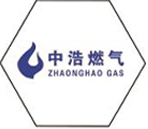
Nov . 26, 2024 22:52
Back to list
Optimizing Gas Coalescer Filters for Enhanced Efficiency and Performance
Understanding Gas Coalescer Filters A Comprehensive Overview
Gas coalescer filters play a crucial role in various industrial processes, especially in the oil and gas sector, where the separation of water and other contaminants from gas streams is essential for optimal operation. These filters are designed to improve efficiency, reduce downtime, and safeguard equipment by ensuring only clean gas reaches processing units.
What is a Gas Coalescer Filter?
A gas coalescer filter is a specialized filtration device that removes liquid contaminants from gas streams. The primary purpose of these filters is to collect and coalesce tiny droplets of liquid, such as water or hydrocarbons, into larger droplets that can be easily removed. This process is vital in preventing corrosion, equipment damage, and inefficiencies in production processes.
The Working Principle
The coalescing process begins when the gas enters the filter. The filter media, typically made from synthetic fibers or glass fibers, captures small liquid droplets present in the gas. These droplets then cling to the fibers and start to merge or coalesce into larger droplets due to the gravitational force and the surface tension acting on them.
As the coalescing continues, larger droplets form and eventually become heavy enough to overcome resistance in the gas stream, allowing them to gravity settle down to a collection chamber at the bottom of the filter. The cleaned gas exits the filter at the top, significantly reduced in impurities and moisture content.
Types of Gas Coalescer Filters
There are several types of gas coalescer filters, each designed for specific applications
1. Single-stage Coalescers These products are effective for removing larger droplets and are generally easier to maintain. They're suitable for applications where the liquid contaminant levels are moderate.
2. Two-stage Coalescers These filters provide a more thorough cleaning process by using two different layers of filtration media, allowing for effective separation of both small and large droplets. They are often used in processes where high purity gas is required.
3. Filter Separator This combination device includes both coalescing filters and other types of filtration to remove solids and liquids simultaneously. It’s commonly used in applications where the gas stream may contain particulates along with liquid contaminants.
Benefits of Gas Coalescer Filters
gas coalescer filter

The advantages of using gas coalescer filters are manifold
- Efficiency By removing water and other contaminants from gas streams, coalescer filters improve the efficiency and reliability of gas processing systems.
- Equipment Protection A clean gas supply helps protect downstream equipment from corrosion, erosion, and fouling, significantly extending the lifespan of valuable machinery.
- Reduced Downtime With lower maintenance needs and fewer breakdowns due to contamination, facilities see enhanced operational uptime.
- Cost Savings In the long run, organizations can save on maintenance and repair costs, insurance premiums due to reduced risk, and increased productivity.
Applications
Gas coalescer filters are prevalent in various industries beyond oil and gas, including
- Petrochemical Plants Ensuring the purity of feed gases prevents catalyst poisoning and enhances product quality.
- Natural Gas Processing In natural gas treatment, coalescers remove water to prevent hydrate formation and pipeline corrosion.
- Coal-Fired Power Plants They minimize the carryover of water vapor, contributing to the efficiency of gas turbines.
Conclusion
In conclusion, gas coalescer filters are an essential component in maintaining the efficiency and integrity of gas processing systems. By effectively removing liquid contaminants from gas streams, they not only protect equipment but also ensure that operations run smoothly and efficiently. As industries continue to evolve, the importance of robust filtration solutions like gas coalescer filters cannot be overstated. Investing in these filters is a strategic move for companies looking to enhance operational performance and reduce long-term costs.
Latest news
-
Safety Valve Spring-Loaded Design Overpressure ProtectionNewsJul.25,2025
-
Precision Voltage Regulator AC5 Accuracy Grade PerformanceNewsJul.25,2025
-
Natural Gas Pressure Regulating Skid Industrial Pipeline ApplicationsNewsJul.25,2025
-
Natural Gas Filter Stainless Steel Mesh Element DesignNewsJul.25,2025
-
Gas Pressure Regulator Valve Direct-Acting Spring-Loaded DesignNewsJul.25,2025
-
Decompression Equipment Multi-Stage Heat Exchange System DesignNewsJul.25,2025

